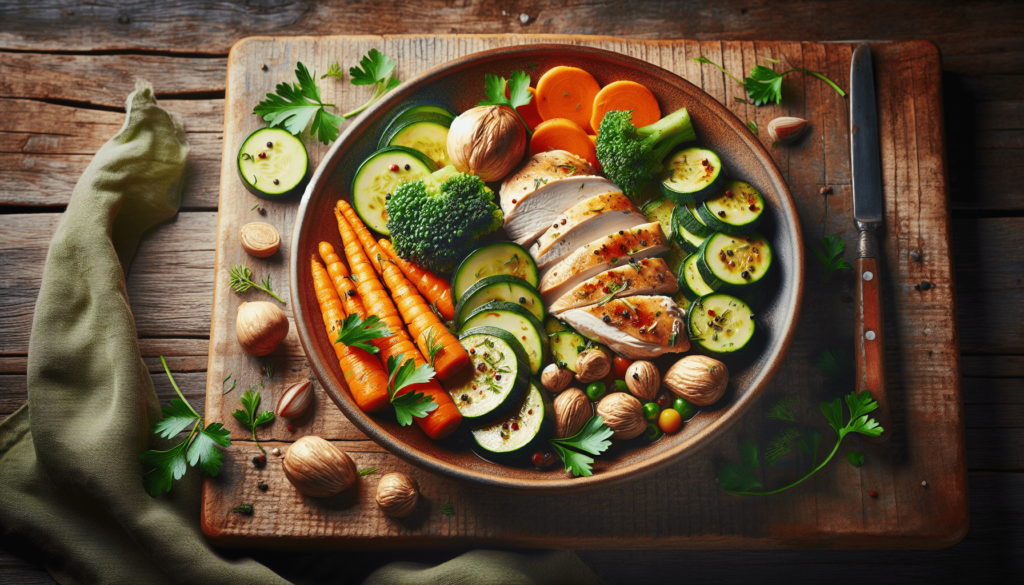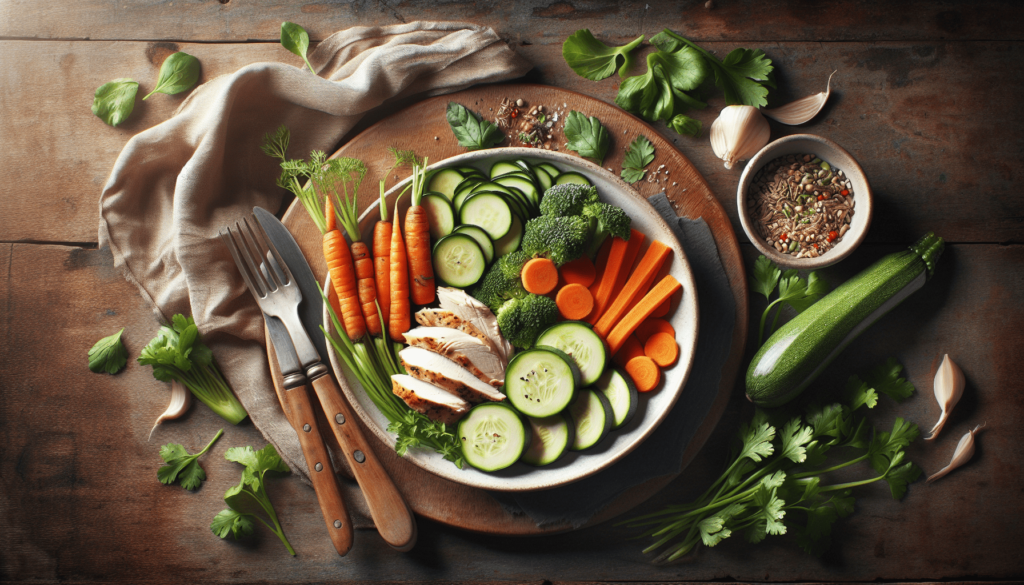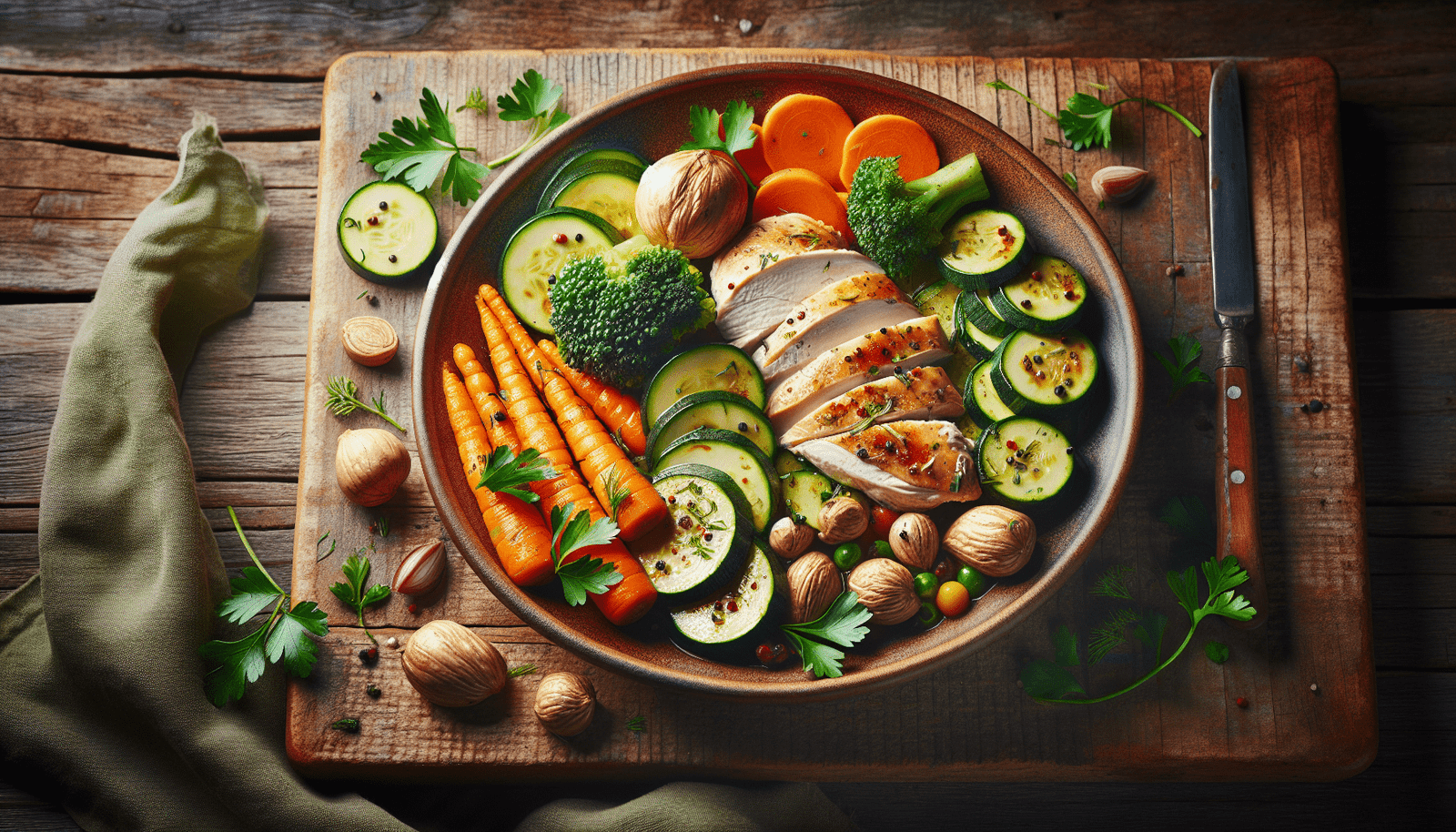Have you ever found yourself in a bit of a bind, trying to prepare a meal that’s both delicious and gentle on your stomach? If digestive discomfort has been a frequent guest at your dining table, then you’re likely familiar with the frustration of finding foods that agree with you. The good news? You’re not alone in this journey, and there’s a tasty solution on the horizon.
Let’s chat about the wonderful world of Low FODMAP foods, a fantastic way to enjoy great meals while catering to your digestive health. FODMAPs—an acronym for Fermentable Oligosaccharides, Disaccharides, Monosaccharides, and Polyols—are simple carbohydrates that can trigger digestive issues for some people. By making slight adjustments to your kitchen repertoire, you can love what you eat without stirring up trouble for your insides.

Understanding Low FODMAP Diet
What is the Low FODMAP Diet?
At its core, the Low FODMAP Diet is designed to reduce the intake of specific types of carbohydrates that can wreak havoc in your gut. These carbs are not easily absorbed by the small intestine, leading to fermentation and gas, causing bloating, cramping, and in some cases, even diarrhea. A diet low in these ingredients helps mitigate these symptoms, offering a smoother digestive sailing. Developed by researchers at Monash University, the diet has been shown to reduce symptoms of irritable bowel syndrome (IBS) and other similar conditions.
Why Consider a Low FODMAP Diet?
Envision a life where you eat what you love, without regretting it later. If bloating and abdominal discomfort have become regular in your life, the Low FODMAP Diet may be worth considering. It’s not just about restriction—it’s about empowerment. By understanding what foods trigger discomfort, you’re in a position to make informed choices that benefit your physical well-being. Many people experience significant improvement in their symptoms, making the adventure into low FODMAP eating a rewarding endeavor.
Planning Your Low FODMAP Meals
Before you embark on this culinary journey, it’s important to have a plan. Not only will this save you time, but it will also ensure that you’re prepared to make meals that cater to your gut health.
Essential Ingredients for Low FODMAP Cooking
Stocking your pantry with the right ingredients is crucial. Here’s a quick list to help you kickstart your low FODMAP adventure:
- Proteins: Chicken, turkey, lean beef, fish, and eggs are all great.
- Fruits: Choose from bananas, grapes, strawberries, and oranges.
- Vegetables: Carrots, cucumbers, and bell peppers are your friends.
- Grains: Opt for rice, quinoa, and gluten-free pasta.
- Dairy Alternatives: Lactose-free milk and yogurt, almond milk.
- Fats and Oils: Olive oil and butter in moderate amounts.
With these essentials in your kitchen, you’re ready to whip up meals that are kind to your digestive system.
Breakfast on a Low FODMAP Diet
Chia Pudding Delight
Start your day with a scrumptious and satisfying chia pudding. Not only is it low FODMAP-friendly, but it’s also packed with nutrients!
Ingredients:
- 2 tablespoons chia seeds
- 1 cup lactose-free milk or almond milk
- 1 tablespoon maple syrup
- Fresh fruit (such as strawberries or blueberries)
Instructions:
- Combine the chia seeds, milk, and maple syrup in a bowl.
- Stir well and let it sit for about 5 minutes. Stir again to prevent clumping.
- Refrigerate overnight or for at least 4 hours until it thickens.
- Top with fresh fruit and enjoy a refreshing start to your day!
Greek Yogurt Parfait
Mix and match fresh ingredients to create a parfait that’s perfect for morning satisfaction.
Ingredients:
- 1 cup lactose-free Greek yogurt
- 1/2 cup sliced strawberries
- 1/4 cup blueberries
- 1 tablespoon maple syrup or a sprinkle of cinnamon for flavor
Instructions:
- Layer half of the yogurt at the bottom of a glass or bowl.
- Add a layer of strawberries and blueberries.
- Add another layer of yogurt.
- Top with more berries and your choice of sweetener or spice.
Both of these breakfasts are easy to prepare and convenient to grab on your way out the door.
Lunchtime Low FODMAP Recipes
Grilled Chicken Salad
This vibrant salad combines lean protein and crisp vegetables for a midday meal that keeps you feeling full and energized.
Ingredients:
- 1 grilled chicken breast, sliced
- Mixed greens (such as spinach, kale, or arugula)
- 1/2 red bell pepper, sliced
- 1/4 cucumber, diced
- 1 tablespoon pumpkin seeds
- Olive oil and lemon juice for dressing
Instructions:
- Arrange the greens on a plate or in a bowl.
- Top with the sliced chicken breast.
- Add the bell pepper, cucumber, and add a sprinkle of pumpkin seeds.
- Drizzle olive oil and lemon juice over the entire salad.
Quinoa and Vegetable Bowl
Quinoa packs a protein punch in this veggie-rich bowl—perfect for a hearty lunch.
Ingredients:
- 1 cup cooked quinoa
- 1/2 cup diced tomatoes
- 1/2 cup sliced zucchini
- 1 tablespoon olive oil
- Salt and pepper to taste
Instructions:
- Heat the olive oil in a skillet over medium heat.
- Add the zucchini and cook until it starts to soften, about 5 minutes.
- Add the tomatoes and cook for an additional 3 minutes.
- Combine the quinoa with the cooked veggies, seasoning with salt and pepper.
Lunchtimes no longer need to be bland or cause you grief. With recipes such as these, your daytime meals will be something to look forward to.

Dinner Delights for Digestive Health
Lemon Herb Roasted Chicken
This savory delight is bursting with flavor, yet keeps things simple and delicious.
Ingredients:
- 4 chicken thighs
- 2 tablespoons olive oil
- Juice of 1 lemon
- 1 tablespoon chopped fresh herbs (such as parsley or thyme)
- Salt and pepper
Instructions:
- Preheat your oven to 400°F (200°C).
- Place chicken thighs in a baking dish.
- Combine olive oil, lemon juice, herbs, and seasoning, and pour over the chicken.
- Roast in the oven for 30-40 minutes until the chicken is cooked through.
Zucchini ‘Noodles’ with Pesto
A healthier and gut-friendly spin on traditional pasta—zucchini noodles are both satisfying and fun to make!
Ingredients:
- 2 medium zucchini, spiralized
- 1/4 cup basil pesto (check label for low FODMAP)
- 2 tablespoons Parmesan cheese, grated
Instructions:
- Spiralize the zucchini into noodle shapes.
- Sauté in a skillet over low heat with a spoonful of pesto for about 3 minutes, until just tender.
- Serve with additional pesto and a sprinkle of Parmesan.
These recipes ensure that dinner is not only delightfully tasty but also supportive of your digestive well-being.
Snacks and Sweets on Low FODMAP
Peanut Butter Energy Balls
A quick and easy energy boost that’s perfect for snacking without the digestive worries.
Ingredients:
- 1 cup oats
- 1/2 cup natural peanut butter
- 2 tablespoons maple syrup
- 1/4 cup unsweetened coconut flakes
Instructions:
- Combine all ingredients in a bowl.
- Mix until thoroughly combined.
- Roll into small balls and refrigerate until firm.
Strawberry Sorbet
Refreshing, fruity, and the perfect sweet treat to cool off.
Ingredients:
- 2 cups frozen strawberries
- 1/4 cup maple syrup
- 1 tablespoon lemon juice
Instructions:
- Blend all ingredients until smooth.
- Pour into a container and freeze for at least two hours.
- Serve with a sprig of mint for added freshness.
Ensuring you have sweet and savory snacks at hand means you can always satisfy your cravings while staying on track.
Practical Tips for Low FODMAP Cooking
Meal Preparation Strategies
Weekly meal prep can significantly reduce the stress of following a Low FODMAP lifestyle. Cook in batches to have meals ready when needed, saving time and ensuring you have access to gut-friendly foods.
Knowing Your Portion Sizes
Portion control is essential on a Low FODMAP diet. Some foods are low FODMAP in small amounts, but could cause symptoms if you eat too much. Use measuring tools to maintain appropriate portions and lean on recommended serving sizes.
Staying Creative in the Kitchen
Challenge yourself to innovate with spices and herbs. Transforming simple ingredients with fresh herbs can elevate any dish without the need for potentially triggering additions.
Conclusion
Digestive health and delicious meals do not have to be mutually exclusive. On the contrary, they can exist beautifully together with the right approach and recipes. By embracing a Low FODMAP diet, you’re stepping into a world of flavorful possibilities that promote well-being. Dive into these recipes, tailor them to your tastes, and enjoy the journey to a happier gut!
As you explore these tips and recipes, always listen to your body and adapt ingredients to what suits your health needs best. This diet is about finding balance and taking control, ensuring every meal is a joyful and comfortable experience.
Some of the links on this site are affiliate links, which means I may earn a small commission if you click on them and make a purchase, at no additional cost to you. As an Amazon Associate, I earn from qualifying purchases.



